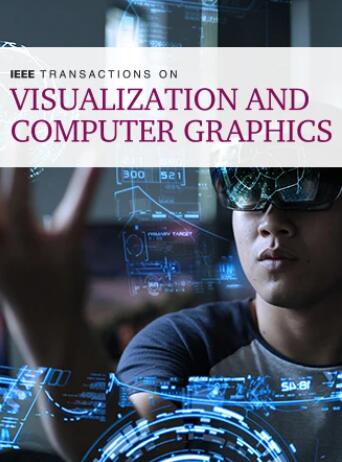PCDNF: Revisiting Learning-based Point Cloud Denoising via Joint Normal Filtering
IF 6.5
1区 计算机科学
Q1 COMPUTER SCIENCE, SOFTWARE ENGINEERING
IEEE Transactions on Visualization and Computer Graphics
Pub Date : 2022-09-02
DOI:10.48550/arXiv.2209.00798
引用次数: 2
Abstract
Point cloud denoising is a fundamental and challenging problem in geometry processing. Existing methods typically involve direct denoising of noisy input or filtering raw normals followed by point position updates. Recognizing the crucial relationship between point cloud denoising and normal filtering, we re-examine this problem from a multitask perspective and propose an end-to-end network called PCDNF for joint normal filtering-based point cloud denoising. We introduce an auxiliary normal filtering task to enhance the network's ability to remove noise while preserving geometric features more accurately. Our network incorporates two novel modules. First, we design a shape-aware selector to improve noise removal performance by constructing latent tangent space representations for specific points, taking into account learned point and normal features as well as geometric priors. Second, we develop a feature refinement module to fuse point and normal features, capitalizing on the strengths of point features in describing geometric details and normal features in representing geometric structures, such as sharp edges and corners. This combination overcomes the limitations of each feature type and better recovers geometric information. Extensive evaluations, comparisons, and ablation studies demonstrate that the proposed method outperforms state-of-the-art approaches in both point cloud denoising and normal filtering.PCDNF:基于联合法向滤波的重访学习点云去噪
点云去噪是几何处理中的一个基本问题。现有的方法通常包括直接去噪噪声输入或过滤原始法线,然后更新点的位置。认识到点云去噪和正态滤波之间的重要关系,我们从多任务的角度重新审视了这个问题,并提出了一个称为PCDNF的端到端网络,用于基于联合正态滤波的点云去噪。我们引入了一个辅助的法向滤波任务,以增强网络的去噪能力,同时更准确地保留几何特征。我们的网络包含两个新颖的模块。首先,我们设计了一个形状感知选择器,通过为特定点构建潜在切空间表示来提高噪声去除性能,同时考虑到学习点和法向特征以及几何先验。其次,我们开发了一个融合点特征和法向特征的特征细化模块,利用点特征在描述几何细节方面的优势和法向特征在表示几何结构(如尖锐的边缘和角落)方面的优势。这种组合克服了每种特征类型的局限性,更好地恢复了几何信息。广泛的评估、比较和消融研究表明,所提出的方法在点云去噪和正常滤波方面都优于最先进的方法。
本文章由计算机程序翻译,如有差异,请以英文原文为准。
求助全文
约1分钟内获得全文
求助全文
来源期刊

IEEE Transactions on Visualization and Computer Graphics
工程技术-计算机:软件工程
CiteScore
10.40
自引率
19.20%
发文量
946
审稿时长
4.5 months
期刊介绍:
TVCG is a scholarly, archival journal published monthly. Its Editorial Board strives to publish papers that present important research results and state-of-the-art seminal papers in computer graphics, visualization, and virtual reality. Specific topics include, but are not limited to: rendering technologies; geometric modeling and processing; shape analysis; graphics hardware; animation and simulation; perception, interaction and user interfaces; haptics; computational photography; high-dynamic range imaging and display; user studies and evaluation; biomedical visualization; volume visualization and graphics; visual analytics for machine learning; topology-based visualization; visual programming and software visualization; visualization in data science; virtual reality, augmented reality and mixed reality; advanced display technology, (e.g., 3D, immersive and multi-modal displays); applications of computer graphics and visualization.
 求助内容:
求助内容: 应助结果提醒方式:
应助结果提醒方式:


